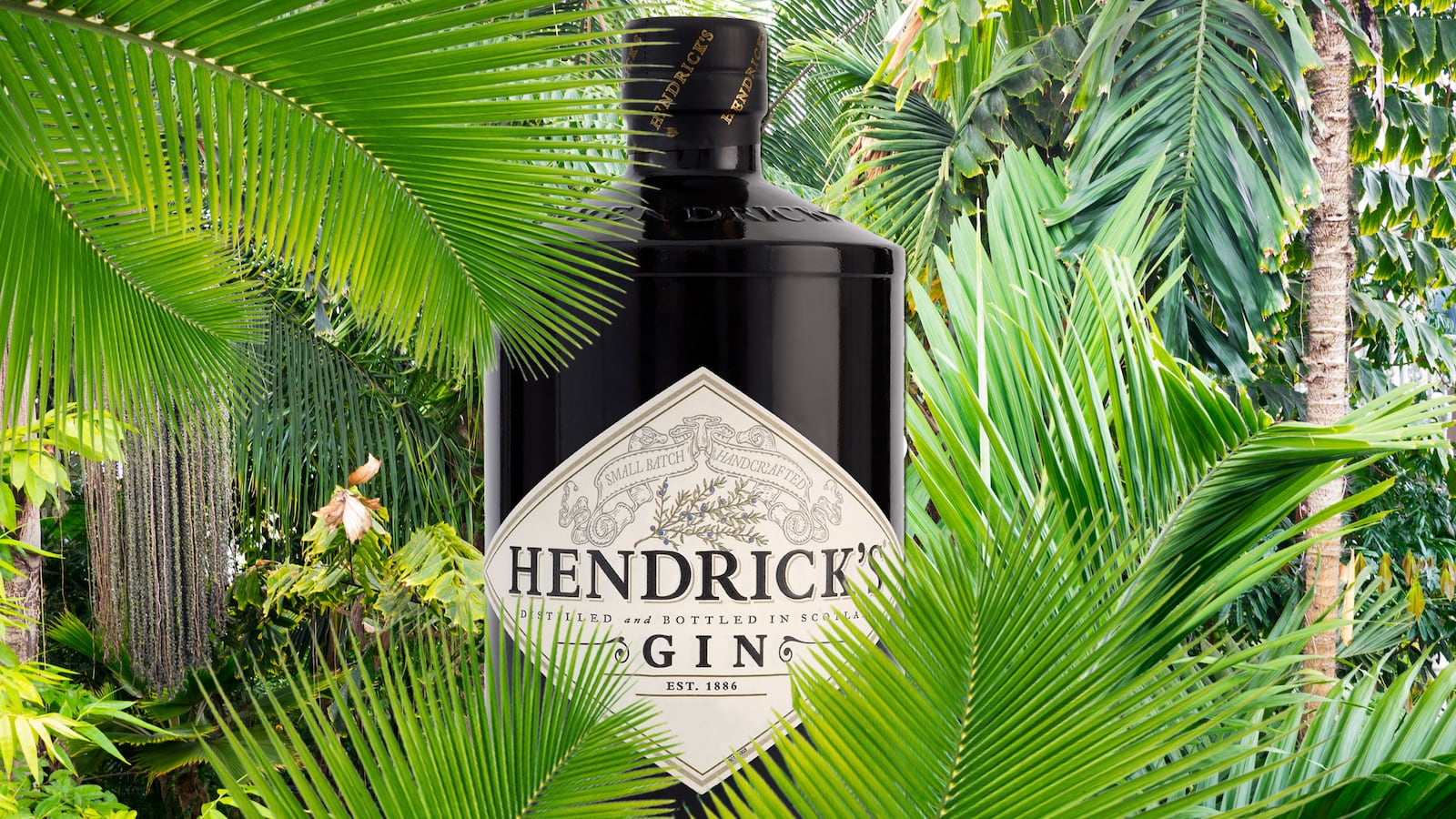You’d never guess what went into creating the gin used in that martini, gin punch, or bramble you just ordered at happy hour. For a special edition of one particular brand, it took a trip deep into the Amazon to find the perfect ingredients.

Lesley Gracie has worked for William Grant & Sons since 1988. In 1999, the company charged her with the task of concocting an ultra-premium gin using a Bennet copper-pot still made in 1860 and a 1948 Carter-Head still purchased in 1966 by William Grant’s great-grandson Charles Gordon. The result was a batch of gin infused with rose and cucumber, in addition to the traditional juniper berries that classify a spirit as a gin, that helped change the way the world looks at the spirit. It was named Hendrick’s and, as its creator was one of only three people in the world who knew its recipe, Gracie became its master distiller.
Hendrick’s helped transform the public’s perception of the traditional, staid London dry gin, giving it a new, modern makeover. Many in the spirits industry say that the current gin resurgence is due in part to Hendrick’s, which only produces 200,000 cases a year and is packaged in what is now its signature apothecary-style bottle. A rep from the company says cucumber and rose were two of the more elaborate suggestions offered and Gracie went to work testing them. (Hendrick's says the essence of both are added after distillation.)
Last year, Gracie and her distilling team decided to shake their recipe up yet again after Gracie met explorer Charles Brewer-Carias—a modern-day Indiana Jones who has written and illustrated several books, discovered the world’s largest quartzite cave, and has 27 plants, reptiles, insects, and a scorpion named after him—at an event in Philadelphia. The two started talking about the 11 botanicals including flowers, roots, fruits, and seeds that go into each batch of Hendrick’s Gin. “We got talking about different botanicals,” says Gracie. “He asked, ‘You want new botanicals?’ Come to my back garden.”
What Brewer-Carias was referring to when he said “back garden” was the jungles of Venezuela. Gracie packed up her Wellington boots, long-sleeved shirts, and trousers, and flew to Caracas with a five-liter alembic still. She and Hendrick’s global ambassador, David Piper, boarded a small Cessna plane with Brewer-Carias and botanist Francisco Delascio and flew deep into the rainforest to a village that was home to the Kanaracuni tribe. This would be their home base while they spent around 10 days trekking through the jungle in search of the perfect new botanical.
“The days were quite hectic,” Gracie explains. “There’s no power in the village. You got up when it was light and you went to bed when it was dark, so we would get up and breakfast and wash, and then we would head out into whichever area we were going into. Some days we went across the savannas and into jungle areas, and other days we went, the Indians took us on their dug-out canoes on the rivers, and that was just amazing. It was only then, really, that the concept of jungle really struck home, when you’re going down the river, and you can only see about six feet into the jungle, and then it’s black after that because there’s no light coming in through the canopy. I think that’s really when it struck home that that’s what a jungle is.”
“The nights there are long, and very very dark, and lots of animals making all sorts of noise in the forest just beyond the village clearing,” Piper adds. “If you sign your torch, there’s just thousands of eyes looking at you—insect eyes, animal eyes, frog eyes. There’s a general nervousness, and a fear of the unknown because it’s a dark forest.”
The group trekked for about 10 days trying out numerous plants before they found the right one: Scorpion Tail.
“We crushed the leaves and the flowers and smelled it, and thought ‘that’s got the elements that we’re looking for,’ and mixed the extract into alcohol, and then nosed and tasted that, and it was still the same as when we crushed it. And then we distilled it, and [the scent and taste] was still the same,” she explains.
The process to fully distill the Scorpion Tail took three hours. “We’d chop a lot of the Scorpion Tail up and leave it to steep. I had lots of different pots of this, and then, before the distillation, I would filter the extract, so I didn’t put any of the actual plant material into the still itself,” Gracie says.
Gracie brought the 8.4 liters of distillate out of the jungle, and, before boarding a plane from Caracas back to Scotland, poured it into 10 empty Pellegrino bottles. “We basically put the alcohol into the bottles and just explained to [customs agents] it was just alcohol,” Gracie says.
When she returned to the Hendrick’s Distillery in the seaside village of Girvan, Gracie got to work infusing the Scorpian Tail into Hendrick’s Gin to make a limited edition batch.
“We were looking at the Hendrick’s and the taste profile of that against the Scorpion Tail,” Gracie says. “So we spent a lot of time balancing it to get it just right.”
The result is Hendrick’s Kanaracuni, which was named after the tribe the team stayed with in Venezuela. “I think it’s obviously Hendrick’s, but we’ve increased the spice and the green and the floral notes, but not to the point where it’s upset the balance of the product,” says Gracie. “It enhanced, but not unbalanced it.”
Only 560 bottles of Hendrick’s Kanaracuni were produced, and the edition is so exclusive that it can’t be purchased in stores. It will only be distributed to select bars and at official company events.
As several gins venture into unchartered territory, infusing the juniper berry classic with things like raspberry (Noblet’s Dry Gin), lavender and honeysuckle (Bloom Premium London Dry Gin), and Douglas fir needles (St. George Terroir Gin), Hendrick’s, which was one of the pioneers of the new gin movement, chose to stay true to its mantra of embracing the unordinary by exploring the Amazon.
And where does Gracie hope to search for ingredients for the next special edition of Hendrick’s? Asia, perhaps the old Spice Route. “That would be amazing,” says Gracie.





